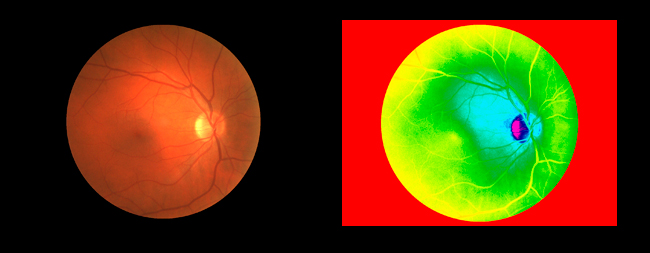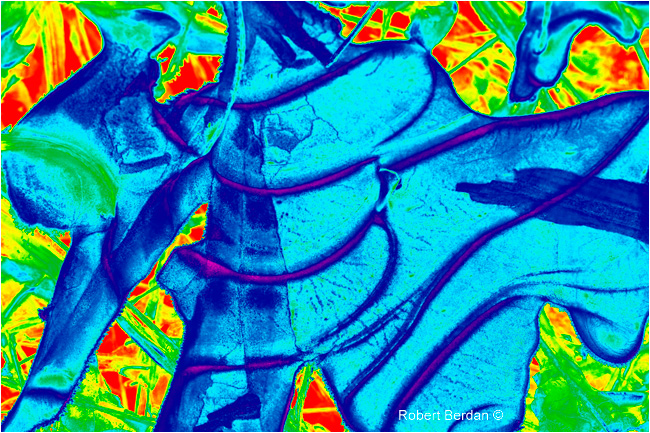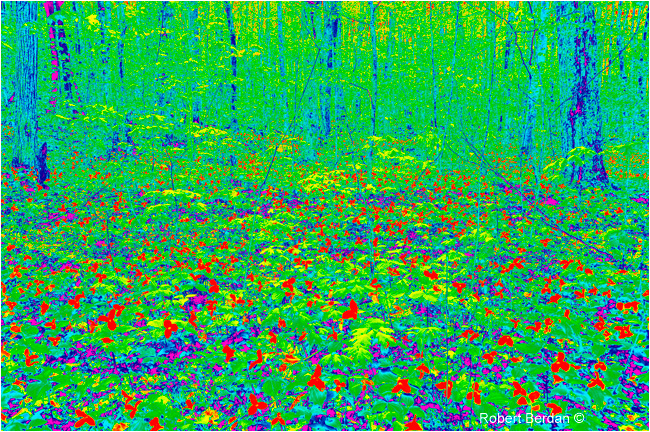
False Colour Imaging in Photography & Science
By Dr. Robert Berdan
May 5, 2012
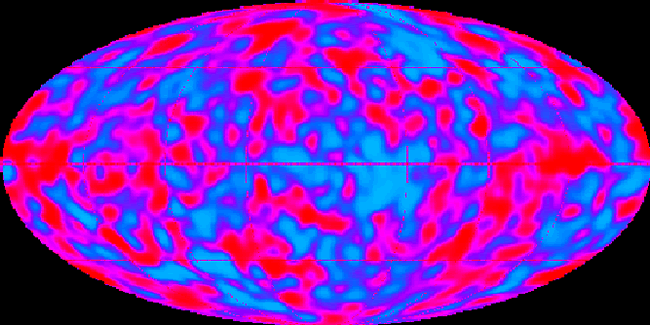
Above is a false color picture of an anisotropy map taken by the Cosmic Microwave Background Explorer (COBE). The different colors pertain to different temperatures or energy levels in the Universe and support the Big Bang Theory. For more information see: http://cmb.physics.wisc.edu/tutorial/cmb.html
False color imaging is used extensively in different branches of science including astronomy, weather, biology and neuroscience to enhance images. Some images, for example those from electron microscopes and x-rays are only available in black and white. Using the computer scientists add colors that pertain to different densities in the photograph to help us detect differences more easily. The human eye is more sensitive to gradations and changes in color then it is to changes in black and white tones. See below.
Above you can see differences in density more easily when they are false colored
Picture of the retina of my eye - the bright spot is the fovea: left - normal light, right false colored. The blood vessels
in the background are more easy to spot in the false coloured image.
The colors in themselves are not important except that they represent different tones or densities which can represent many different things in research. In general photography we don't normally false color images unless it is for artistic purposes. In the examples below I experimented with some of my nature photographs by applying different color gradients. As both a nature photographer and a scientist I like to explore different possibilities in photography and below are some of my creations which you may or may not like. Below I describe how you can create these false color images using Adobe Photoshop.
Frozen ice in pond - false color
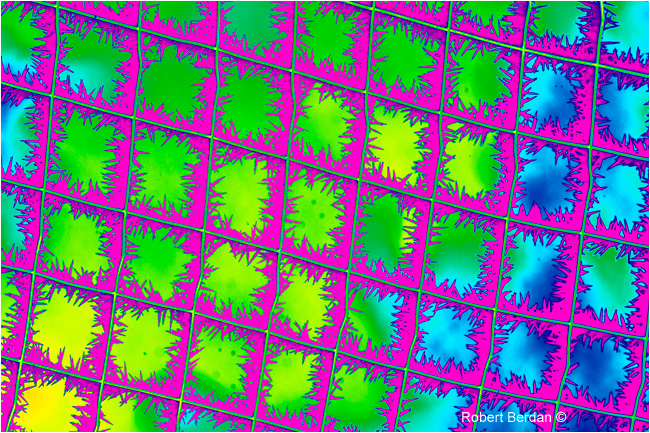
Hoar Frost on wire fence - false color

Zebra stripes - False color
How to Create False Color Images using Adobe Photoshop
1. Select and open and image in Adobe Photoshop
2. Select Image>Adjustments>Gradient Map - when the gradient map box opens click on the black to white gradient
Gradient Map pop up box in Photoshop - Click on the top gradient
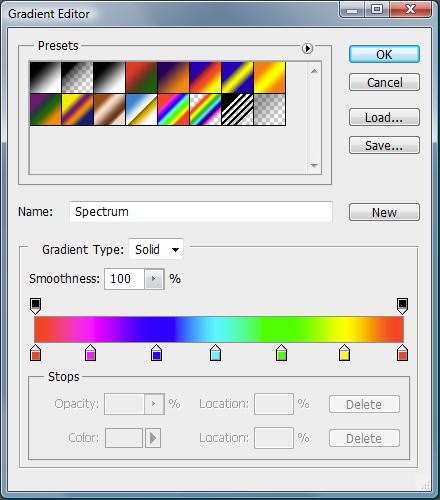
3. Photoshop Gradient Editor - select one of the gradient at the top and Click OK , then OK and you will see your false
colored image - you can also create your own gradients with customized colors. False color images have an abstract quality about them and its not always apparent what the images are.
Spring forest scene with Trilliums (red) growing on the ground.
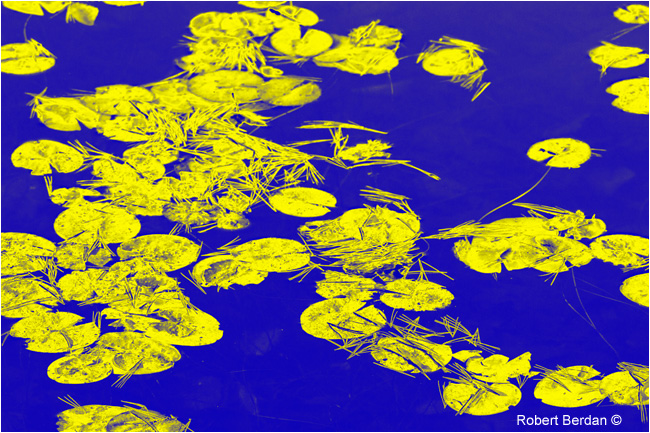
This photograph used only a two color gradient and its easy to see the pond lilies and pine needles.
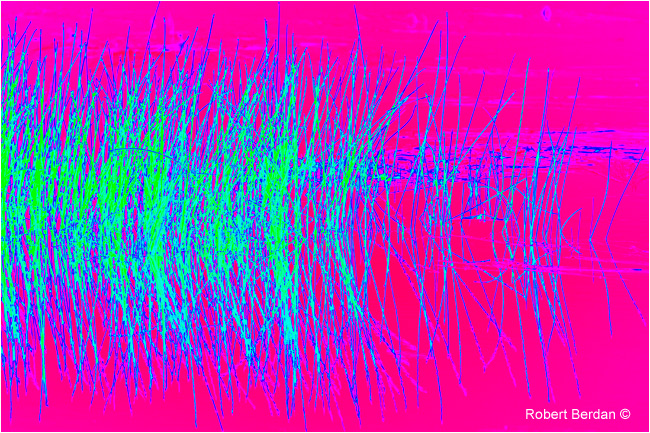
Bulrushes on Vermilion Lake
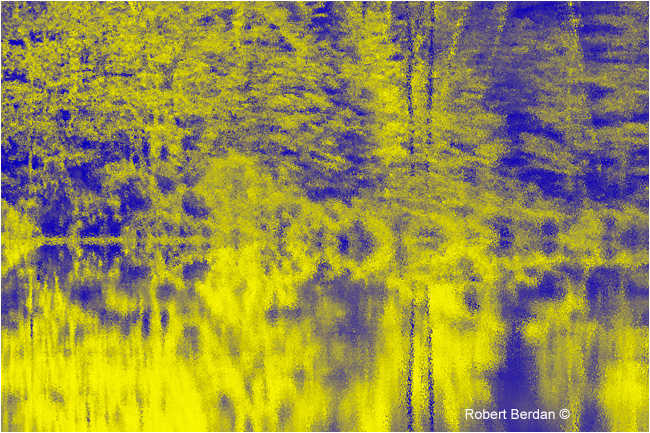
Autumn forest scene in front of a calm lake - Northern Ontario.
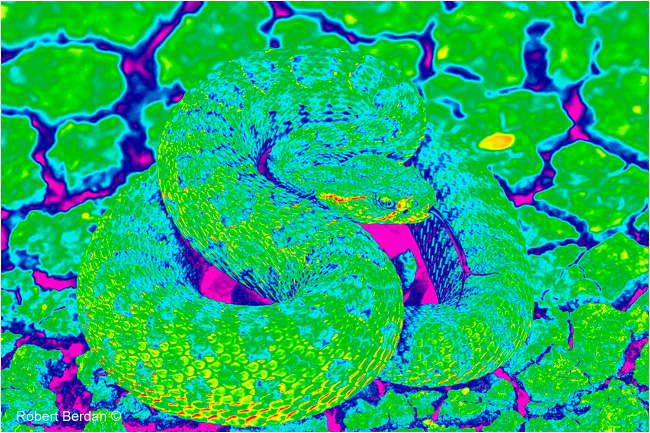
Rattle snake on Bentonite - cracked mud

Vermilion lakes Banff National Park
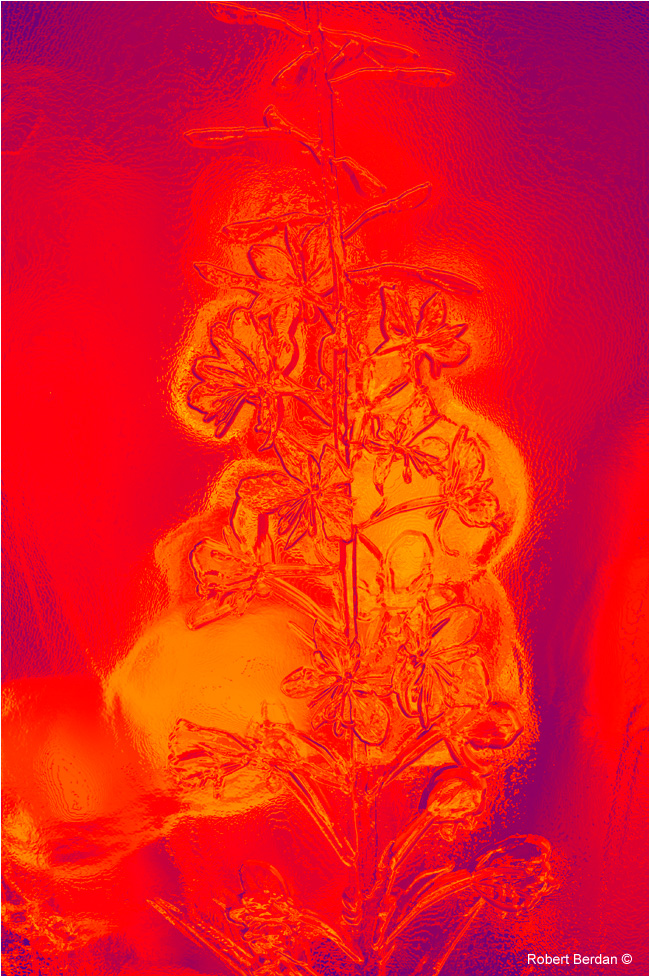
Common Fireweed resembles stained glass - False colored.
You might like these images then again you might not. I suppose in the right place they might make for some colorful prints, but they are definitely not for everyone. The technique is useful in Science for illustration purposes and research and it has also been used by some artists to create "digital art". I believe that we can also enjoy color patterns for its own sake. RB
Links & Resources
[ Top ] |

